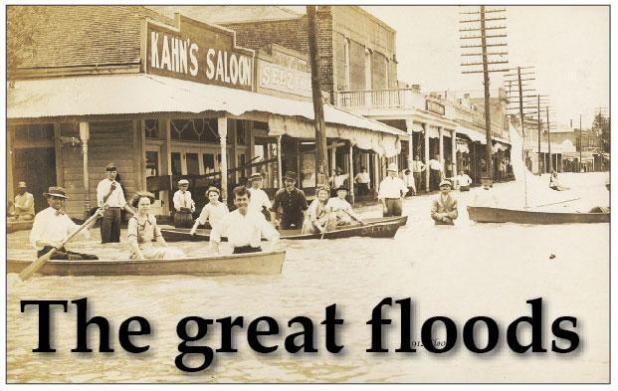
Submitted photos
People make their way through downtown Morgan City in boats during the 1912 flood.
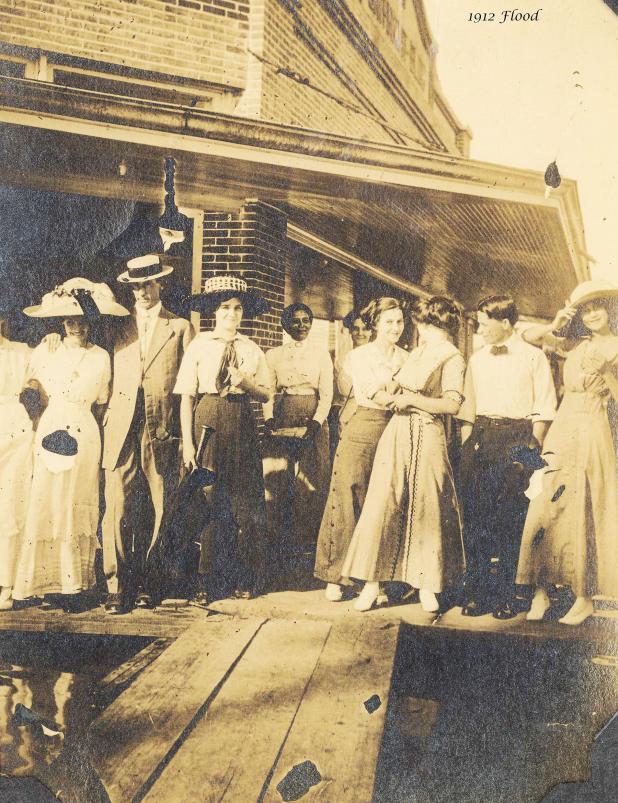
The flood of 1912 was no reason not to dress up for these ladies and gentlemen at that Gathright building.
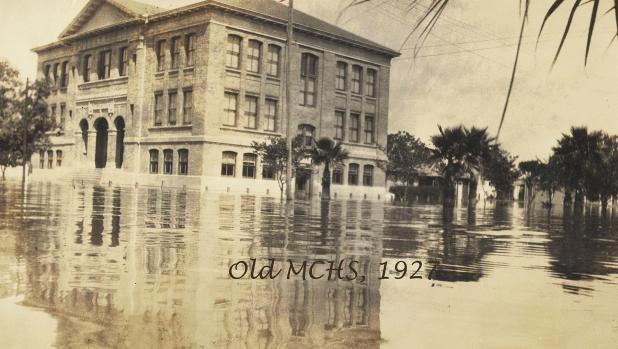
High water threatens the old Morgan City High building.
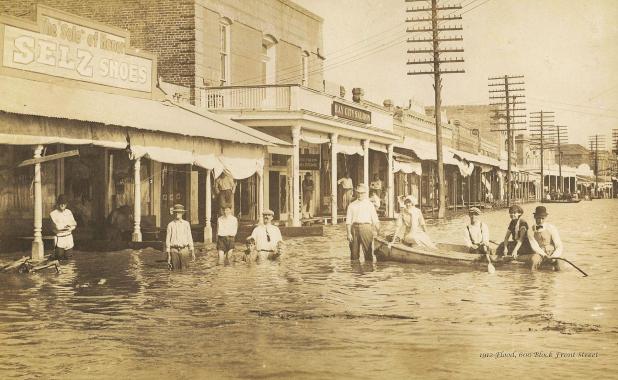
The water was knee- to waist-high in the 600 block of Front Street during the 1912 flood.
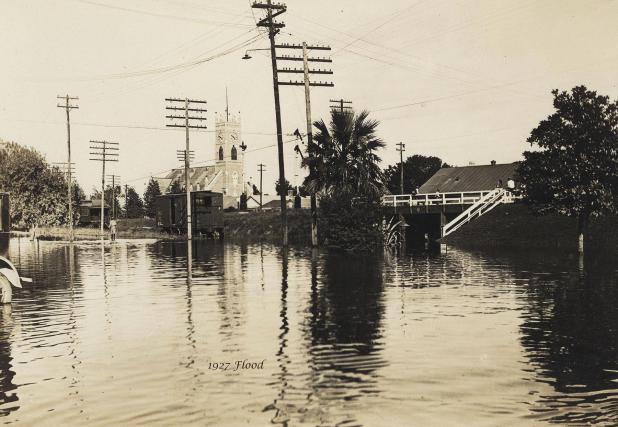
This view of the 1927 flood shows water on Railroad Avenue with Sacred Heart Catholic Church in the background.
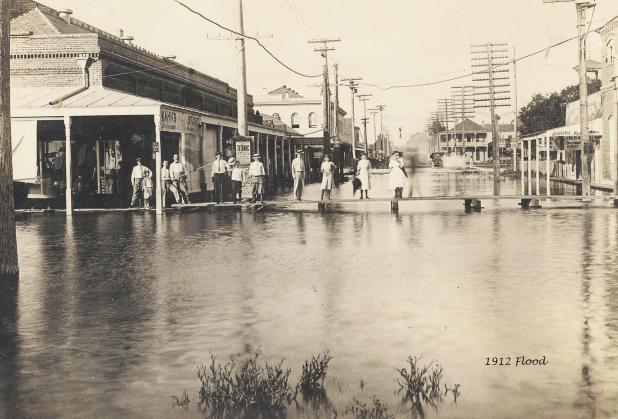
A series of planks helped people cross this street during the flood of 1912.
High water makes its mark on Morgan City history
Spring is high water season for those of us living on Berwick Bay and for the Atchafalaya River. Although Louisiana is susceptible to flooding year-round, it is during this season that we are particularly vulnerable.
Many residents of our area remember the floods of 1957, 1973, 1975 and 2011. Visit the floodwall monument next to the floodwall gate at Freret Street and Front Street in Morgan City to see the water level markers from these major flood events.
According to the U.S. Army Corps of Engineers, in The Acadiana Advocate newspaper in 2019, “The Mississippi River Valley drains about 41 percent of the country, and this has been the wettest period in the eastern U.S. in the past 124 years.” The website riskfactor.com claims that the risk of flooding in the future will impact day-to-day life in our communities.
However, the inhabitants of the past have disproven the speculation of these experts who express their concerns for our future. The occupants of Morgan City have always taken the inconvenience of high water in stride, adjusting their lives, as necessary.
The Atchafalaya River’s flooding has challenged our citizens living on its banks in 1865, 1867, 1882, 1912, 1927, 1937, 1945 and 1950.
These pictures of flooding in 1912 depict Morgan City residents coping with elevated wooden planks for sidewalks and using skiffs and pirogues for travel – everyone with a smile on his face.
Gentlemen are seen sitting or standing in the water wearing suits, shirts, and ties.
Ladies have donned their finest bonnets and grabbed their handbags to walk along the planks and shop at the stores on fashionable Railroad Avenue and Front Street. Gathright and Soumellian, Kahn’s, Bojarsky’s, Belanger’s Drug Store, and Shannon’s would have been a few of their destinations.
Photos from 1927 indicate the same “make it work” response from the public. The pirogues may have become speedboats in the streets, and the wagons changed to automobiles, but the citizens of Morgan City accept their fate and keep plugging along.
In a letter written on July 27, 1927, my great-great aunt, 65-year-old Marie Pauline Gray, uses humor to depict the resilient attitude of Morgan City’s residents. She writes that her family thought it best that she not remain in her home alone during the anticipated high water.
Upon her return home, she comically describes the upheaval in her house:
“I could not tell you all the diplomatic and apologetic talk I had to do to my old furniture when I came home! They were all indignant and did not understand why they should have been moved in such an undignified position two feet off the floor, on blocks like stilts!
“And the books, too, were raising a din upstairs about being separated from their kind – histories disliked being in company with religious books; Shakespeare said that Napoleon on one side of him was continuously trying to fight him while on the other side, there was Tom Sawyer almost making him lose his dignity.”
Humor, endurance, acceptance, and resilience – all traits of our local population who will endure their future watery fate with a little assistance from the 449 miles of levees and flood walls that protect the Atchafalaya Basin Floodway.
